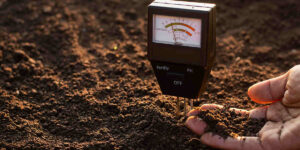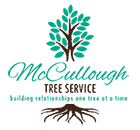By: Shelby McCullough| Published: March 20, 2023
Do your trees look weak and sickly? Contact us at (407) 734-5854 to see how we can help.

If your trees are turning yellow, dropping blossoms, or growing more slowly than they should, your soil may be missing essential nutrients that plants need to grow. Without a soil test, though, you’re left in the dark as to what’s wrong and how to fix it.
At McCullough Tree Service, we know the importance of maintaining soil health and are here to explain everything you need to know about soil testing to help your trees and plants look their best.
Why Do You Need a Soil Test?
If you notice your plants’ leaves turning yellow or becoming crispy, a soil test can tell you if anything is wrong. Similarly, trees with dropping leaves and flowers and plants frequently developing diseases may necessitate a soil test.
However, soil testing isn’t just for when something is wrong. It’s also helpful when preparing soil for a new garden, clarifying how much fertilizer you need, and adjusting acidic soils or alkaline soils.
How Soil Testing Benefits Your Plants
Soil testing offers numerous benefits that help promote optimum plant growth, including:
- Reducing fertilizer runoff into waterways
- Saving money on unnecessary fertilizer applications
- Growing trees and plants that are robust, lush, uniform in size, and more resistant to pests and disease
- Increasing yield for fruit trees and vegetable-producing plants
- Pinpointing specific areas of the yard that are lacking in nutrients
How to Collect Soil for Testing
Follow these step-by-step instructions to collect a soil sample:
- Scoop up a shovelful of dry, unfertilized soil and pour it into a bucket.
- Make a solution of two parts soil to one part water.
- Pour some of the solution into a small container and cover the top with a paper coffee filter.
- Pour the solution through the coffee filter into a separate bag or testing container.
- Send the diluted solution to a soil testing lab and wait for the results.
This is only one option for collecting a sample. Your lab may have another preferred collection method, so follow its instructions closely.
Tips for Successful Soil Testing
Here are a few tips to help you get the most from your soil testing:
- Practice consistency when collecting soil samples for the most accurate results.
- Take soil samples approximately two hours before fertilizing. If possible, remove large chunks of fertilizer from the soil before collecting a sample.
- Test soil before planting a new garden to get your plants off to a good start.
- Conduct testing throughout the growing season to adjust fertilizer amounts as needed.
- If you’re growing different types of plants in containers, order a soil test for each one.
- Collect samples from both healthy and unhealthy plants to compare their soil nutrient profiles.
Get Help From the Experts at McCullough Tree Service
If your trees and plants aren’t thriving, our McCullough Tree Service team is here for you! Our experts are ready to help you build healthy soil with soil aeration and testing in Belle Isle and nearby cities. Give us a call at (407) 734-5854 to book a consultation or learn more.

